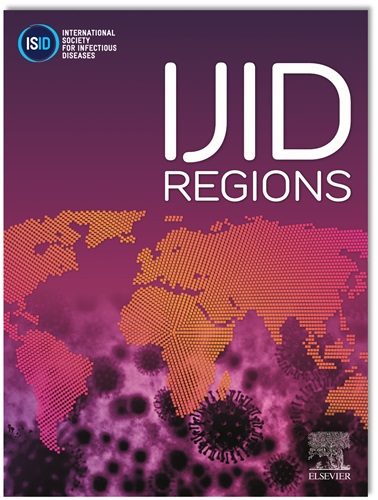Spatial modelling of vector-borne diseases: Where? When? How many?
IF 4.8
2区 医学
Q1 INFECTIOUS DISEASES
引用次数: 0
Abstract
Avia-GIS R&D team has an extensive expertise in the spatial modeling of vector-borne diseases (VBDs) to address critical concerns regarding the epidemiology and control of VBDs. Our work focuses on dissecting the complex interactions between vectors, hosts, and the environmental conditions that facilitate disease transmission. Through the integration of machine learning techniques, our endeavors to predict not only the presence and activity of disease vectors but also the potential for disease outbreaks and their impact on populations in a one health context.
Central to our approach are three questions concerning the vector: (1) Where is the vector present? (2) When will the vector be active? and (3) How many vectors will be active at any given time? These inquiries are crucial for understanding the spatial and temporal dynamics of vector populations, which in turn influence the transmission of vector-borne diseases. Answering these questions, aids in identifying areas and times of high transmission risk, thereby enabling more effective vector control strategies and disease prevention measures.
Parallel to the vector-focused analysis, similar questions need to be answered from the disease perspective: (1) Where can the disease occur? (2) When will there be an outbreak? and (3) How much of he population will be affected? This aspect of our work is aimed at predicting the geographical spread and timing of disease outbreaks, as well as estimating the potential number of cases. Such predictions are vital for public health planning and response, as they help in allocating resources efficiently and implementing timely interventions to mitigate the impact of outbreaks.
The integration of insights from both the vector and disease aspects forms the foundation of an early warning system. Such a system combines data on vector presence and activity with information on environmental and climatic conditions, host population, and historical disease incidence to forecast where and when outbreaks are likely to occur, and how severe they may be. Machine learning techniques play a pivotal role in this process, enabling the analysis of large datasets and the identification of patterns that may not be apparent through traditional epidemiological methods.
媒介传播疾病的空间建模:在哪里?什么时候?有多少?
阿维亚地理信息系统(Avia-GIS)研发团队在病媒传播疾病(VBDs)的空间建模方面拥有丰富的专业知识,能够解决病媒传播疾病的流行病学和控制方面的关键问题。我们的工作重点是剖析病媒、宿主以及促进疾病传播的环境条件之间复杂的相互作用。通过整合机器学习技术,我们不仅能预测病媒的存在和活动,还能预测疾病爆发的可能性及其在一个健康环境中对人群的影响。(2)病媒何时活跃? (3)在任何特定时间有多少病媒活跃?这些问题对于了解病媒种群的时空动态至关重要,而病媒种群的时空动态又会影响病媒传播疾病。回答这些问题有助于确定传播风险高的地区和时间,从而制定更有效的病媒控制战略和疾病预防措施。与病媒分析并行的是,还需要从疾病的角度回答类似的问题:(1)疾病会在哪里发生?(2) 什么时候会爆发? (3) 多少人口会受到影响?我们这方面工作的目的是预测疾病爆发的地理分布和时间,以及估计潜在病例数。这种预测对公共卫生规划和应对措施至关重要,因为它们有助于有效分配资源和及时实施干预措施,以减轻疾病爆发的影响。这种系统将病媒存在和活动的数据与环境和气候条件、宿主人口和历史疾病发病率等信息结合起来,预测疫情爆发的地点和时间,以及疫情爆发的严重程度。机器学习技术在这一过程中发挥着关键作用,它能够对大型数据集进行分析,并找出传统流行病学方法可能无法识别的模式。
本文章由计算机程序翻译,如有差异,请以英文原文为准。
求助全文
约1分钟内获得全文
求助全文
来源期刊
CiteScore
18.90
自引率
2.40%
发文量
1020
审稿时长
30 days
期刊介绍:
International Journal of Infectious Diseases (IJID)
Publisher: International Society for Infectious Diseases
Publication Frequency: Monthly
Type: Peer-reviewed, Open Access
Scope:
Publishes original clinical and laboratory-based research.
Reports clinical trials, reviews, and some case reports.
Focuses on epidemiology, clinical diagnosis, treatment, and control of infectious diseases.
Emphasizes diseases common in under-resourced countries.

 求助内容:
求助内容: 应助结果提醒方式:
应助结果提醒方式:


